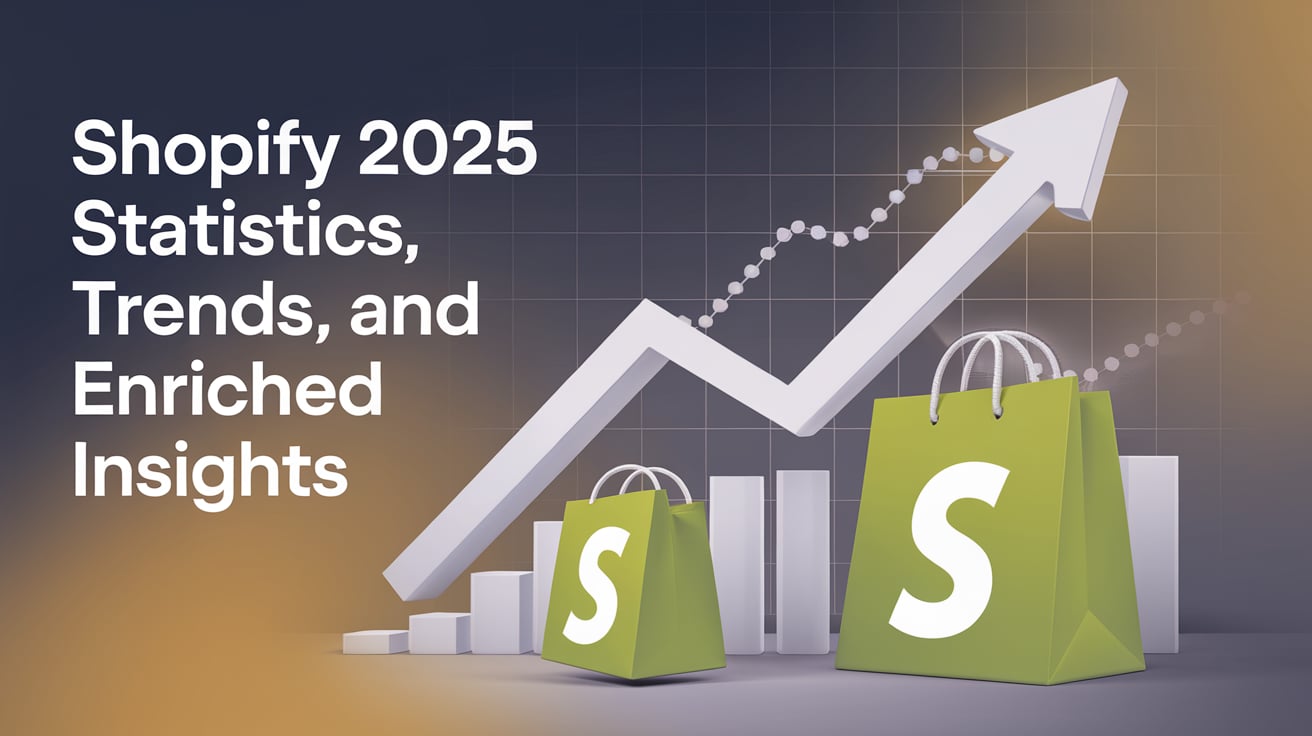E-commerce continues to evolve at a breakneck pace, and Shopify remains at the forefront of this transformation. With new consumer behaviors, emerging technologies, and shifting market expectations, staying ahead of the trends in 2025 is critical for Shopify store owners.
In this article, we’ll explore the top Shopify and e-commerce trends for 2025 — from AI-driven personalization to seamless omnichannel experiences — and how you can adapt your store to stay competitive.
1. AI-Powered Personalization Is No Longer Optional
AI is moving from “nice to have” to “must-have.” In 2025, Shopify merchants who aren’t using AI to personalize the shopping experience risk falling behind.
What’s Changing:
- Shopify is integrating more machine learning-based recommendations natively.
- Apps like LimeSpot, Rebuy, and Klevu use customer behavior to dynamically adjust product suggestions, upsells, and even email flows.
- AI chatbots like Tidio AI and Heyday are replacing human agents for pre-sale and post-sale support.
What You Should Do:
- Leverage Shopify’s personalized recommendations blocks.
- Use AI tools to tailor product suggestions based on purchase history, location, or behavior.
- Add AI-powered product quizzes or chatbots to guide purchase decisions.
2. Visual Commerce & Shoppable Video Are on the Rise
Static product photos are no longer enough. In 2025, visual storytelling through video, 360° product views, and AR is a major differentiator.
What’s Changing:
- Shopify is pushing video and 3D model support more prominently.
- Platforms like Tolstoy and Videowise allow shoppable video embeds on product pages.
- Short-form content, including TikTok-style video reviews, is being used for product showcases.
What You Should Do:
- Add lifestyle videos or product demos directly to your product pages.
- Consider using AR apps like Shopify AR or Zakeke for 3D previews.
- Use user-generated content (UGC) from influencers or customers to create trust.
3. The Rise of One-Click and Passwordless Checkout
Fast, frictionless checkouts are a top priority in 2025.
What’s Changing:
- Shopify is expanding Shop Pay and native wallet integrations (like Apple Pay and Google Pay).
- Passwordless logins via magic links or biometrics are becoming more common.
- New checkout extensibility features allow developers to customize the checkout flow more than ever before.
What You Should Do:
- Enable Shop Pay, and make sure your site supports digital wallets.
- Reduce unnecessary fields in the checkout process.
- Consider using Shopify’s Checkout Extensibility APIs if you’re on Shopify Plus.
4. Global Selling Made Easier with Shopify Markets Pro
Cross-border selling used to be complex — now it’s a growth opportunity.
What’s Changing:
- Shopify Markets Pro now allows merchants to:
- Show localized pricing
- Automate tax/VAT collection
- Handle duties and customs seamlessly
- Language translation and multi-currency support are improving.
What You Should Do:
- Enable Shopify Markets and configure settings for target regions.
- Offer local currencies and language translations via apps like Langify or Translate & Adapt.
- Make sure your products comply with international shipping laws.
5. Mobile-First UX & Progressive Web Apps (PWAs)
In 2025, mobile-first isn’t just design — it’s strategy.
What’s Changing:
- Over 70% of Shopify sales come from mobile.
- Shopify stores are increasingly investing in progressive web apps (PWAs) to offer app-like performance in the browser.
- Google continues to reward Core Web Vitals performance (speed, responsiveness) for mobile.
What You Should Do:
- Choose or customize a mobile-optimized theme.
- Use tools like Ampify Me or PWA by Ampify to convert your store into a PWA.
- Optimize your store’s speed using image compression, lazy loading, and app audits.
6. Subscription and Membership Models Are Expanding
E-commerce in 2025 is not just about one-time sales — it’s about lifetime customer value.
What’s Changing:
- Shopify now supports native subscription APIs through apps like Recharge, Skio, and Bold Subscriptions.
- More merchants are building exclusive memberships with perks (e.g., free shipping, early access).
What You Should Do:
- Consider offering subscription boxes for your products.
- Create a VIP program or loyalty membership with gated content or discounts.
- Use email automation to retain subscribers and reduce churn.
7. Data Ownership and First-Party Tracking Are a Priority
With third-party cookies fading, Shopify is investing in first-party data collection and analytics.
What’s Changing:
- Shopify has improved its own analytics and customer behavior tracking.
- Tools like Shopify Pixel Manager allow for more accurate tracking across platforms like Facebook and TikTok.
- Focus is shifting to email list growth, SMS marketing, and loyalty programs.
What You Should Do:
- Collect emails through popups, lead magnets, and checkout opt-ins.
- Focus on creating value-driven email flows using Klaviyo or Omnisend.
- Track campaign attribution with first-party pixels and UTM parameters.
Final Thoughts
2025 is shaping up to be an exciting — and challenging — year for Shopify merchants. The common thread across all trends? Customer-centricity powered by technology. Whether it’s AI, mobile-first design, or seamless cross-border sales, Shopify is building tools to help you grow — but it’s up to you to use them effectively.
Stay agile, invest in your store’s performance, and keep testing new features. The future of e-commerce belongs to those who adapt fastest.

